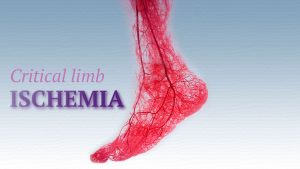Ischemia is a restriction in blood supply to tissues, causing the shortage of oxygen and nutrients to downstream tissues. Ischemia usually causes some critical dysfunction of tissues. This condition often is treated by some surgery methods in combination with drugs. However, some ischemic cases related to a lot of small blood vessels in the hindlimb nearly can not be treated by this way. Recently, this disease is successfully treated by gene therapy with co-injection of genes of ETV-2 and HGF in mouse model. This study is recently published by Pham et al. in the journal Progress in Stem Cell (https://doi.org/10.15419/psc.v4i01.193).
Both ETV-2 and HGF  factors are known to be important factors which trigger neo-angiogenesis both in vitro and in vivo models. This study aimed to treat hindlimb ischemia in mice by co-injection of ETV-2 and HGF viral vectors. ETV-2 and HGF vectors were prepared per previous publications. The mouse ischemic hindlimb model was performed by ligating and burning the artery at the hindlimb. ETV-2 and HGF viral vectors were co-injected into the ligated and burnt sites.
factors are known to be important factors which trigger neo-angiogenesis both in vitro and in vivo models. This study aimed to treat hindlimb ischemia in mice by co-injection of ETV-2 and HGF viral vectors. ETV-2 and HGF vectors were prepared per previous publications. The mouse ischemic hindlimb model was performed by ligating and burning the artery at the hindlimb. ETV-2 and HGF viral vectors were co-injected into the ligated and burnt sites.
The results showed that co-injection of the vectors significantly improved angiogenesis as well as reduced leg loss in mice compared to placebo treatment. The percentage of mice who succumbed to ischemia was also significantly reduced compared to control. Overall, this study suggests a potential impact of combining ETV-2 and HGF to treat angiogenesis. Use of ETV-2 and HGF viral vectors can be a promising therapy for ischemia treatment in the future.
Ischemia is an important health condition that can cause injury for many organs, including brain, heart and hindlimb, due to disruption of blood flow to those downstream tissues/organs. In this study, we show that injection of both ETV2 and HGF lentiviral vectors could significantly stimulate angiogenesis, leading to reduced mortality of mice with ischemic hindlimb. Blood vessel recovery after vector injection improved hindlimb loss, increased blood flow to the toes, and regenerated muscle tissues. Overall, the results of this study suggest that gene therapy with ETV2 and HGF is a promising platform for the treatment of ischemia, particularly hindlimb ischemia.
Jefferey Marval, Contributing Editor
Please read more at: Pham, P., Vu, N., Dao, T., Le, H., Phi, L., & Phan, N. (2017). Co-injection of ETV-2 and HGF viral vectors significantly improve angiogenesis in mice with hindlimb ischemia. Progress In Stem Cell, 4(01). doi:10.15419/psc.v4i01.193
Leave a Reply